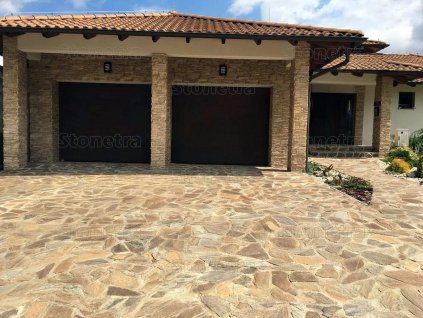Irregular stone
Irregular Stone — Walls, Floors & Accents
Irregular split stone is made by splitting large pieces of natural rock into organic shapes. It’s prized for easy maintenance, long lifespan, and excellent color fastness, and it mixes effortlessly with other materials. Use it outside on facades, fences, plinths, and garden walls, or inside as textured feature walls and fireplace stone. Larger pieces work beautifully for patios, garden seating areas, and informal paths described as fieldstones, flagstone, or crazy paving.
Walkways, Paths & Steps
For traffic areas, lay flagstone pavers to form a durable patio, garden path, or flag stone walkway. Create informal connections with flagstone stepping stones, and handle level changes with robust stone stairs.
Typical thicknesses: split wall cladding 1–3 cm (≈0.39–1.18 in); paving 2–4 cm (≈0.79–1.57 in), 3–5 cm (≈1.18–1.97 in), 4–7 cm (≈1.57–2.76 in), or 5–8 cm (≈1.97–3.15 in), selected to match usage and substrate.
Materials & Performance
- Andesite — highly weather-resistant and long-lasting; excellent for pavements and flagstone paving.
- Gneiss — durable yet workable; ideal for exterior cladding and decorative interiors.
- Sandstone — easy to work, naturally breathable, and comfortably slip-resistant.
- Limestone — smooth, clean look and comparatively light for cladding and paving.
- Quartzite — extremely resistant to mechanical and chemical wear; perfect for high-traffic zones.
- Porphyry — tough and frost-proof; a classic for paths, plazas, and rustic patios.
Want to see real installations? Browse our Fence Cladding Gallery for inspiration.





























